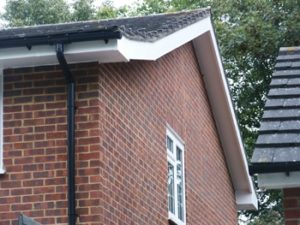
Fascia And Soffit Experts
Add a review FollowOverview
-
Sectors YouTube Views
Company Description
9 Things Your Parents Taught You About Eaves Repair
Comprehensive Guide to Eaves Repair
Eaves play a crucial role in securing homes from weather aspects, directing water overflow, and boosting visual appeal. Due to their popular position, they are often exposed to the elements, leading to conditions that necessitate repairs. This article outlines the significance of eaves, typical issues that arise worrying them, methods for conducting repairs, and pointers for maintenance.
Value of Eaves
Eaves are the edges of the roofing system that extend over the walls of a building. Their primary functions consist of:
- Water Management: They direct rainwater away from the structure and prevent flooding.
- Defense from Weather Elements: Help prevent water seepage, snow, and ice accumulation.
- Energy Efficiency: Properly designed eaves can lower cooling and heating expenses by managing sunshine entering through windows.
- Aesthetic Appeal: They improve the architectural style of a structure, adding character and style.
Typical Issues with Eaves
Eaves can face several problems due to their exposure to the elements. Here are a few of the most frequent concerns:
| Problem | Description |
|---|---|
| Damage from Water | Disintegration, rot, or mold brought on by inadequate drain. |
| Bug Infestations | Birds, pests, and rodents might find shelter in eaves. |
| Structural Damage | Distorted or split eaves can jeopardize roof stability. |
| Missing/incomplete | Missing shingles or panels can expose the interior. |
| Cracks and Gaps | Permit water penetration and bug entry. |
Eaves Repair Methods
Repairing damaged eaves requires varying approaches depending on the problem’s intensity. Here’s a structured approach to eaves repair:
1. Assess the Damage
Before continuing with any repairs, performing a thorough evaluation is essential. Look for:
- Visible damage to the eaves.
- Signs of water damage on walls and foundations.
- Insect infestations or nesting.
2. Gather Necessary Materials
Depending upon the repair requires, the following products may be required:
- Ladder
- Security equipment (gloves, goggles, mask)
- Replacement materials (shingles, wood, and so on)
- Caulk or sealant
- Paint (for visual appeals)
3. Conduct the Repairs
The following are steps for typical repairs:

-
Replacing Damaged Sections:
- Cut away harmed parts of the eaves.
- Step and cut replacement pieces to fit.
- Connect the brand-new sections using nails or screws.
-
Sealing Cracks and Gaps:
- Use caulk or sealant to fill spaces.
- Make sure the area is tidy and dry before using the sealant for effective adhesion.
-
Reinforcing the Structure:

- If structural parts are damaged, consider including support brackets or replacing larger areas of wood.
4. Finish with Painting
After repairs, re-paint the eaves to protect the products from further wear and tear and match them with the home’s outside.
Preventive Maintenance Tips
To prolong the lifespan of eaves and prevent substantial repairs, regular maintenance is necessary. Here are some proactive measures homeowners can take:
- Regular Inspections: Conduct assessments a minimum of twice a year to identify any emerging concerns early.
- Clean Gutters: Ensure gutters are devoid of debris to facilitate proper water flow.
- Trim Overhanging Branches: Prevent leaves and branches from building up and triggering water backups or damage.
- Bug Control: Regularly inspect for and get rid of insect problems.
- Repaint Every Few Years: Protect wooden eaves by repainting or staining as required.
When to Call a Professional
While lots of homeowners can handle minor repairs, some scenarios warrant professional assistance. Consider employing a professional if:
- The repair includes comprehensive structural damage.
- There are security issues, particularly when dealing with heights.
- Insufficient experience in repairs causes uncertainty about correct methods.
Regularly Asked Questions (FAQs)
Q1: How typically should I examine my eaves?
A: It is recommended to examine eaves a minimum of two times a year, ideally in spring and fall, to recognize possible concerns.
Q2: What are the signs that my eaves require repair?
A: Signs consist of visible damage like cracks, sagging, peeling paint, water stains, and insect invasions.
Q3: Can I repair my eaves myself?
A: Many small repairs can be done by house owners, but it’s crucial to evaluate skill levels. For substantial repairs, working with a professional is suggested.
Q4: How do I prevent eaves from ending up being harmed?
A: Regular maintenance, consisting of cleaning rain gutters, checking for damage, and protecting against bugs, can assist prevent eaves from weakening.
Q5: Are eaves repairs covered by property owners insurance?
A: Coverage can differ by policy. It’s necessary to seek advice from your insurance supplier regarding specific scenarios and coverage types.
Eaves play a vital role in a home’s structural integrity and visual appeal. Repairing and maintaining them is necessary for protecting their functionality and extending their life expectancy. With regular assessments and proactive care, homeowners can avoid minor concerns from intensifying into more serious problems. Whether choosing for DIY repairs or hiring a professional, comprehending eaves and their maintenance needs makes sure a safe, effective, and gorgeous living environment.


